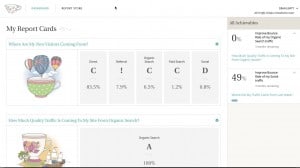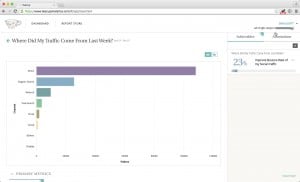7 Mistakes to Avoid While Selling a Product on Your Blog - DailyBlogTips |
| 7 Mistakes to Avoid While Selling a Product on Your Blog Posted: 02 Mar 2016 04:45 AM PST A few weeks ago I wrote an article here titled How to make a full-time income by adding a storefront to your blog. From choosing the right product to choosing an ecommerce platform and marketing your products to selling it to masses, it covers almost everything you need to know while getting started to selling products on your blog. I strongly suggest you to read it first especially if you've never been to selling products on your blog. If you're on WordPress, you can easily convert your blog to an ecommerce storefront by installing a plugin like WooCommerce and a theme that can help you sell to end customers easily. In fact, if you're serious to make a full-time income by selling products, you'll need to avoid mistakes that most newbie sellers used to commit while selling. Let's take a look at the common mistakes most of the newbie seller commits when getting started. 1. Create first, market nextOne of the common mistakes a lot of beginners commit is creating the product first and then trying to figure out how to market it. If you have done your market research you should know your market. Before getting started with the creation process, you should be brainstorming ideas about how you are going to get your product in front of your potential audience. The sooner you start building the momentum, sooner customers enter the sales pipeline. 2. Not building an email listNo matter what your product is, your email list can be your biggest online asset. If you're still not convinced to build an email list, chances are you're leaving a lot of money on the table. Bloggers like Yaro Starak and David Risley have been making six figure incomes by selling their products to their email list. Building an email list helps you make a strong bond with your potential customers. In fact, not every visitor would be in the buying phase when they first land on your blog. However, if you convince them to subscribe to your list, you can eventually nurture them and finally convince them to buy your product. 3. Making wrong assumptionsWhen you're starting out as a seller, it is easier to fall into the trap of making wrong assumptions that could kill your sales. Back in 2012, when I launched my first premium product– an ebook, I made a wrong assumption that if I could actually rank well on Google for a specific keyword, I can make a lot of sales. Back then, my marketing approach was primarily towards SEO. Even though I succeeded in getting at the #1 or #2 positions for the keyword I targeted, a lot of sales I made were through forum marketing rather than the SEO efforts. So what was the mistake I was committing? The truth is the niche of my product was too narrow, so does the keyword search volume on Google. That is, not many people are actually searching on Google for a premium product on that niche. Lesson learned: Validate your points before jumping in to make any assumptions. Write down your objectives and figure out whether it can make what you're planning to before actually implementing it. 4. Having no launch strategyGone are the days when you can actually build a product and simply wait for people to purchase your product. In this digital era, when everyone can create his own products with ease, it is harder to succeed with the 'build it, they'll come' mentality. With no doubt, your launch strategy can actually make or break your business. So it is vital that you go to the right approach while launching your product. A few ideas for launching are:
5. Choosing the wrong platformChoosing the right platform for selling your products can be tricky. For instance, if you're selling an ebook and aren't a well-known figure amongst your niche circles, it's better to use platforms like Amazon rather than trying to sell it on your own blog. Needless to say, customer acquisition can be harder when you're selling it on your own blog. Having said that, ebooks don't sell themselves even if you're using platforms like Amazon. However, with the right marketing strategies, it's totally possible to become one among the best sellers and thus make a huge income. 6. Not creating a landing pageHow many times have you seen bloggers trying to sell products on sidebars without using a landing page or with a mediocre landing page? I don't know about you but I've seen it a lot of times. Yes, A LOT of times- when I say it I mean it. If you're not sure how to create a perfect landing page that sells, I suggest you to read Neil Patel's post, the anatomy of a high conversion landing page. If you're looking for an inspiration to create a landing page, take a look at the landing page of Daniel's Online Profits course. I loved that landing page for many reasons. Some of them are:
7. Thinking selling is easyIf you've never been to selling online I strongly suggest you read this post by Daniel Scocco: Do you think selling is easy? Think again. Creating and selling products on your blog is one of the best ways to make a steady stream of passive income. However, it doesn't mean that selling is easy. You'll need to create the right product and follow your marketing plan religiously. Remember, what work out for someone else wouldn't necessarily work for you. Have you ever launched a product? What are the mistakes you committed when you first launched your product? Share your experience with us in the comments section. Author bio: Shahzad Saeed is a freelance blogger and content marketer who is focused in writing in the marketing, ecommerce and CRO niche. You can visit his portfolio site to read more of his posts. Wanna learn how to make more money with your website? Check the Online Profits training program! |
| You are subscribed to email updates from Daily Blog Tips. To stop receiving these emails, you may unsubscribe now. | Email delivery powered by Google |
| Google Inc., 1600 Amphitheatre Parkway, Mountain View, CA 94043, United States | |




